










| Silver-studded Blue (Plebejus argus (Linnaeus, 1758)) |











|
|
Scientific name: Plebejus argus (Linnaeus, 1758) Common name: Silver-studded Blue French name: Azuré de l'ajonc, Petit argus Order: Lepidoptera Suborder: Rhopalocera Family: Lycaenidae Subfamily: Polyommatinae Wingspan: 29-31 mm. Biotope: Flower meadows. Geographic area: Palaearctic region except the northern areas. Flight time: May-June and July-August Number of generations : 2, 1 for some subspecies. Caterpillar: Green with a white longitudinal line on each side and a dark brown dorsal stripe bordered with white. The head is black and retractable. These caterpillars secrete a honeydew that attracts ants. Host plant: Various Fabaceae including Gorses (Ulex sp), Rattleweeds (Astragalus sp), Coronilla sp, Brooms (Cytisus sp - Genista sp), Galega sp and Lotus sp. This list is not complete as some subspecies feed on other host plants. |
You can tell apart the Lycaenidae of the Plebejus genus with metallic blue or metallic green marks within the black spots on the marginal area of the underside of the hind wings. These marks are sometimes reduced to only a few scales or even sometimes missing. Telling apart species of the Plebejus genus is a more difficult task because there are many subspecies and variations. You can recognize male Silver-studded Blues with the presence of a spine at the front of the fore legs' tibia tip (not always easy to see especially when the leg tip is aligned with the tibia). The upper side of the fore wings is a deep blue colour with a broad black margin. The fringe is a pure white colour (it may be slightly brownish on females). The under side of the wings is a pale grey ground colour. The upper side of the female's fore wings is dark brown with orange lunules which are sometimes missing. The under side of the wings is pale brownish with a white area between the post discal marks and the black marks on the inner edge of the submarginal orange patches. Male Zephyr Blue (Plebejus pylaon), which was only observed in Savoy in France, is a paler blue colour. It may show reddish marks on the upper side of the hind wings. The bright orange stripe on the under side fully extends on the hind wings and on the fore wings. Male Northern Blues (Plebejus idas) and male Reverdin's Blues (Plebejus argyrognomon) do not show any marked spine on the tip of the fore leg tibia and the black margin on the upper side of the wings is thinner. The Northern Blue (Plebejus idas) is more brownish on the under side of the wings than the Silver-studded Blue. The orange lunule band is less sharply marked and the V-shaped marks bordering it look like very sharp arrow points. The Reverdin's Blue (Plebejus argyrognomon) is a slightly larger size. The under side is more whitish. The marks bordering the orange lunules are arc-shaped and not angle-shaped. |
| [To know more about the Silver-studded Blue] [Next picture] [Top] |
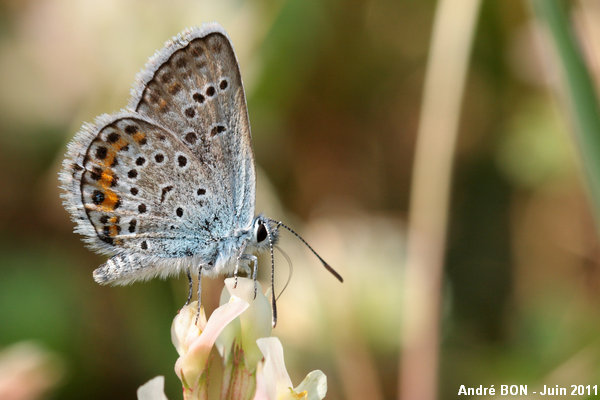
|
The presence of a metallic blue mark within a submarginal spot on the hind wing confirms the Plebejus genus. The spine on the front of the fore leg tibia is visible when zooming in the picture but it is stuck on the tarsi. So this one is a male of the Silver-studded Blue species. Females are a more brownish ground colour. |
| [To know more about the Silver-studded Blue] [Next picture] [Previous picture] [Top] |
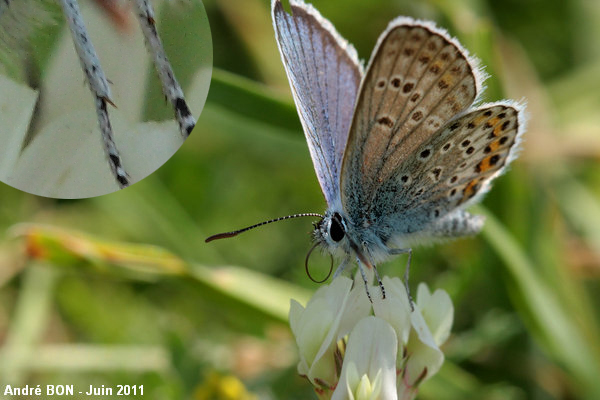
|
The angle between the tibia and the tarsi is enough to have better view of the tibial spine (see the zoomed-in picture in the upper left corner). The black margin on the upper side of the wings appears thinner to me than the margins I am used to seeing in butterfly guides or in photo galleries. |
| [To know more about the Silver-studded Blue] [Next picture] [Previous picture] [Top] |
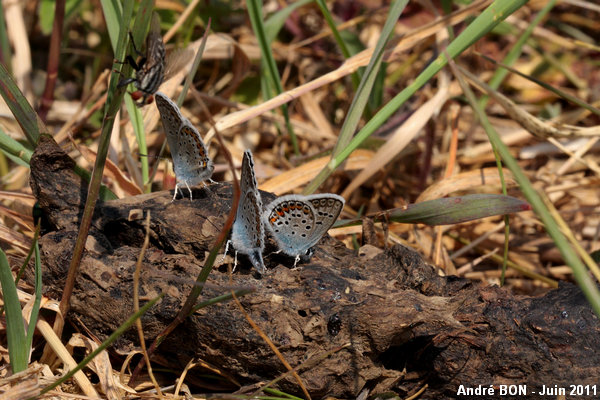
|
Silver-studded Blues are not only attracted by flowers ... |
| [To know more about the Silver-studded Blue] [Next picture] [Previous picture] [Top] |
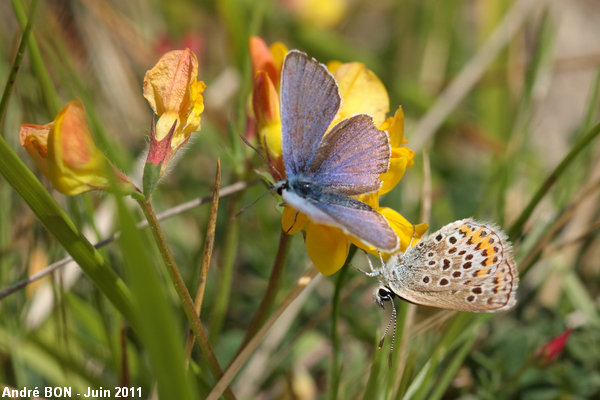
|
The female, on the right, shows a more brownish ground colour on the underside of the wings. The fringe is a dirty white colour. The male has slightly damaged wings but the black margin still appears rather thin to me compared to the typical characteristics of this species. |
| [To know more about the Silver-studded Blue] [Next picture] [Previous picture] [Top] |
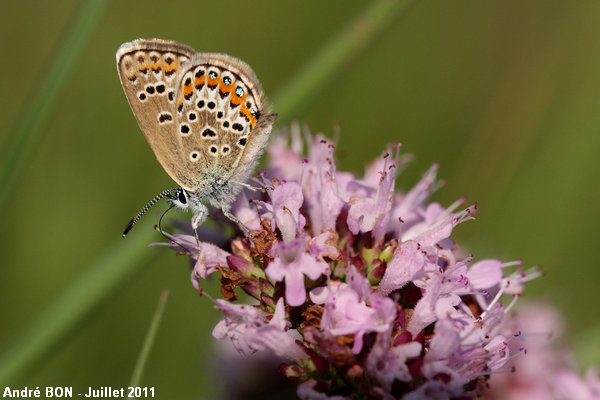
|
Here is a typical female with a brownish colour on the underside of the wings. The fringe is a dirty white colour. |
| [To know more about the Silver-studded Blue] [Next picture] [Previous picture] [Top] |
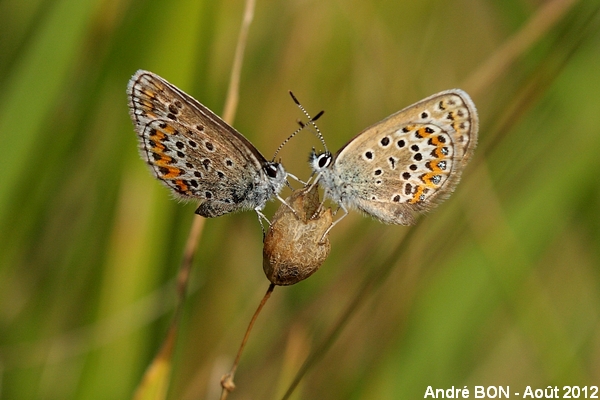
|
These two females have been very kind to pose for the picture. |
| [To know more about the Silver-studded Blue] [Next picture] [Previous picture] [Top] |
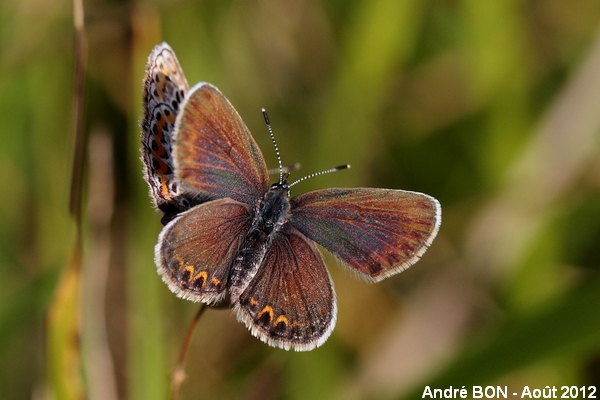
|
Here is the upper side of the female's wings. |
| [To know more about the Silver-studded Blue] [Next picture] [Previous picture] [Top] |
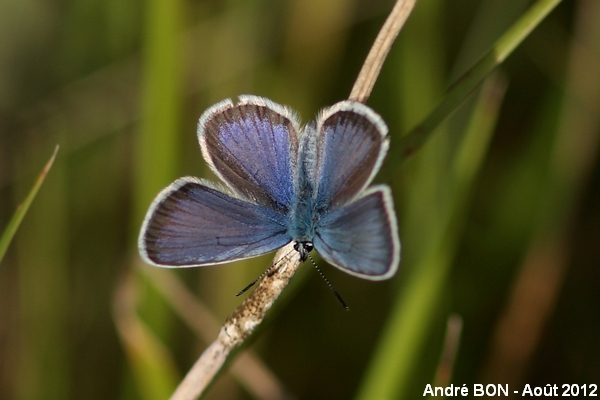
|
Here is an upper side view of the male's wings. You can clearly evaluate the width of the black border. I have been told that this width vary depending on the subspecies which are very numerous. |
| [To know more about the Silver-studded Blue] [Next picture] [Previous picture] [Top] |
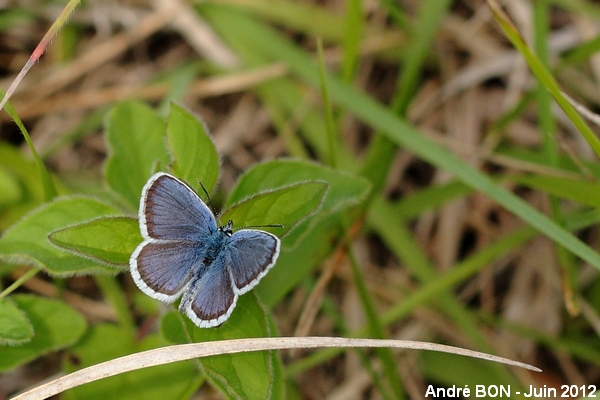
|
Here is another upper side view of the male's wings. |
| [To know more about the Silver-studded Blue] [Next picture] [Previous picture] [Top] |
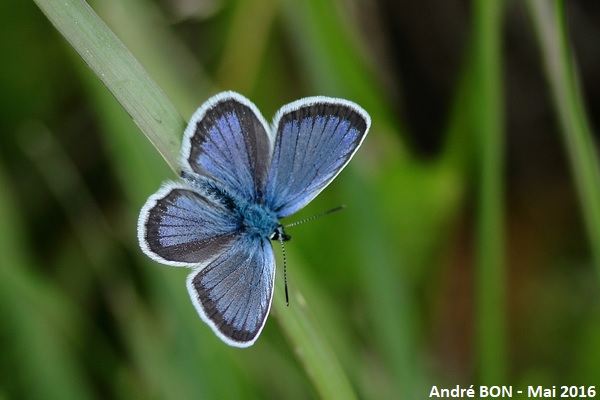
|
The small size, the broad black borders and a couple of other views of the underside of the wings made me decide for the Silver-studded Blue species. |
| [To know more about the Silver-studded Blue] [Previous picture] [Top] |
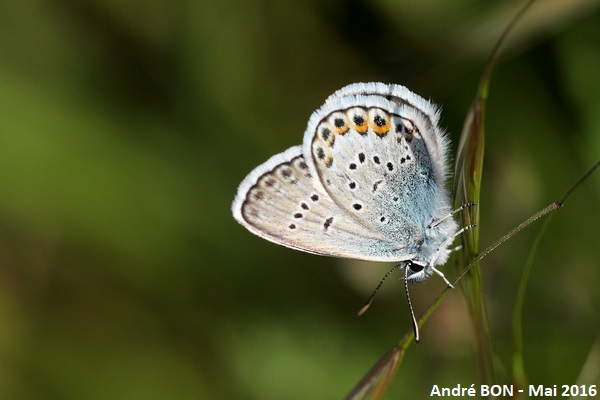
|
Underside view. |